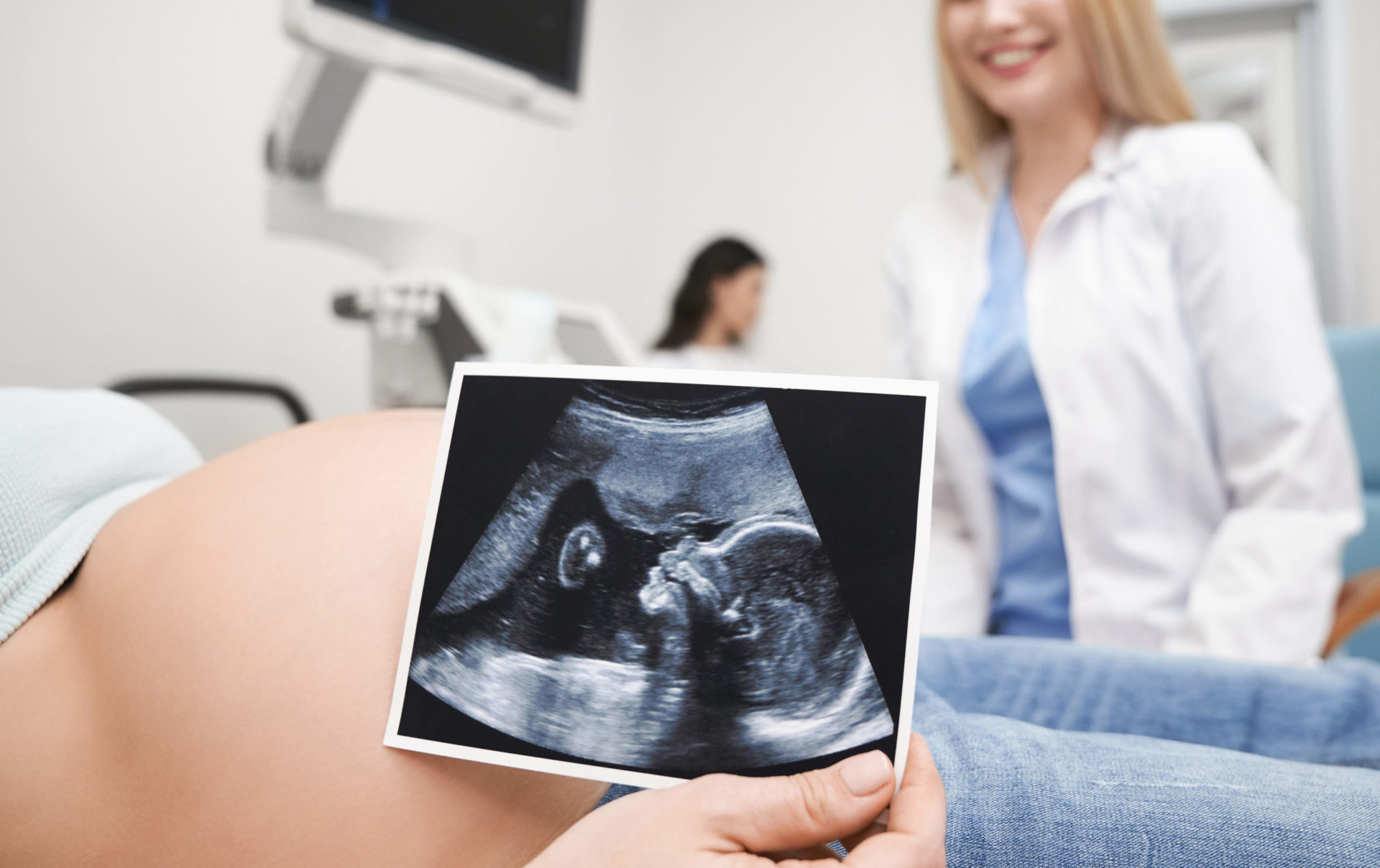Down Syndrome is a chromosomal disorder, typically associated in pregnancies of women at an older age but may occur in any pregnancy, at any age, and is the most common chromosomal abnormality for infants that are liveborn. The genetic hallmark is an extra copy of chromosome number 21. Down syndrome is associated with mental retardation and may be associated with other birth defects. Other similar chromosomal disorders include trisomy 13 and 18 which also have additional chromosomal copies. These disorders are also associated with mental retardation and the potential for significant birth defects.
Your provider should discuss testing for these disorders, ideally at the beginning of your pregnancy. Please understand that these tests are optional and the decision to pursue testing, or not, is highly personal and made by couples for many different reasons. Testing, until recently, occurs early in the pregnancy generally around 12 to 14 weeks, when the information may be most beneficial, but some testing may be performed later. Many people request testing only because they would simply like to know about their baby’s health. Other patients would be interested in termination of the pregnancy. Regardless of the reasons, your provider should discuss these test options with you and also discuss the pros and cons of testing as well as accuracy.
It is important to understand what specific tests can and cannot do. For “screening” tests, a diagnosis is NOT made, meaning that the test is not able to conclude with certainty the absence or presence of the disorder. What it does mean is that if a test returns with concerning results, further testing would be required to confirm. By contrast, a “diagnostic” test is able to confirm the presence or absence of a condition.
Screening Tests
The First Trimester Screening test, done between 11 and 13 weeks, is a very common test I order to screen for Down syndrome. It involves an ultrasound to measure the thickness of the back of the baby’s neck (the nuchal translucency) and the nasal bone is also evaluated to see if it is present. Babies with Down syndrome typically have a thicker nape of their neck and the nasal bone is less prominent. The ultrasound is followed by a blood draw evaluating the level of two analytes. This test has approximately an 87% detection rate for Downs and 95% detection of trisomy 18 and 13 and the benefit of evaluation at an earlier gestational period. There is a 5% false positive rate for this test.
The Quad Screen is a blood test drawn between 15 and 18 weeks of gestation and tests four different proteins, measuring and analyzing them in comparison to women of the same age. This test has an 80 to 83% detection rate, meaning that unfortunately, it may miss nearly 20 % of abnormal pregnancies. It also has a 5% false positive rate, where a patient may be informed she is at a higher risk of Down syndrome, but in fact, have a normal pregnancy. This test is most ideal for patients who present later in pregnancy and are then too far along to have the First Trimester Screening test performed.
Lately, there has been a considerable advancement in chromosomal testing, involving fetal cell-free nucleic acid. In essence,when a woman is pregnant, fetal DNA may be found in the maternal blood, and now we are able to analyze this genetic material. It may be done as early as 10 weeks of pregnancy and is available for select patient populations. This fetal DNA is analyzed for a potentially abnormal chromosome number. This test is 99% accurate for Down syndrome and has really changed chromosomal testing.
Diagnostic Tests
Regardless of the particular test used, if a patient has an abnormal screening test, an amniocentesis or chorionic villi sampling is offered, as these are considered to be diagnostic tests, and as such are able to actually confirm the presence or absence of chromosomal anomalies.
Chorionic villi sampling may be done between 10 – 13 weeks. In this procedure an experienced physician, generally a specialist in high-risk pregnancies, collects a sampling of the placenta either by a catheter placed vaginally or abdominally. This procedure is associated with a higher risk of pregnancy loss than an amnio but given the earlier gestational age may be more desirable for a patient.
An amnio is a procedure wherein a needle is placed, under ultrasound guidance, into the uterus through the mother’s abdomen. When entered into the cavity, amniotic fluid is withdrawn and sent for evaluation. This procedure is associated with a small risk of miscarriage of less than one of every 200 procedures performed. It is typically performed approximately after 15 weeks of pregnancy.




